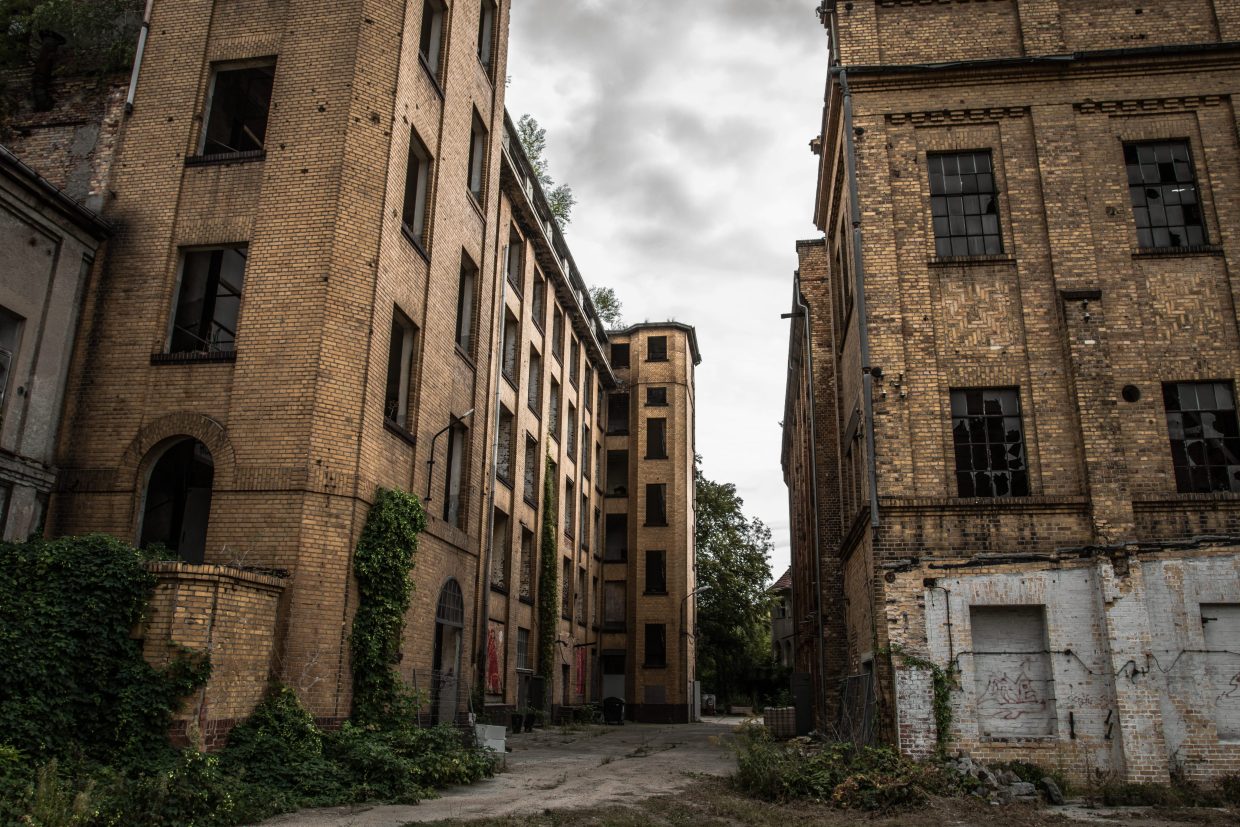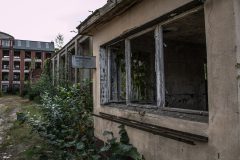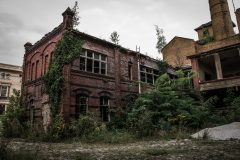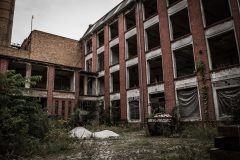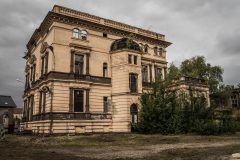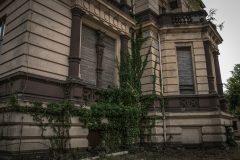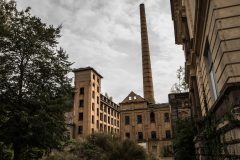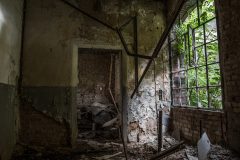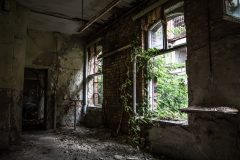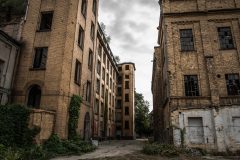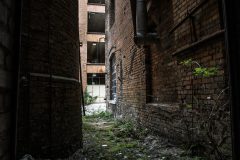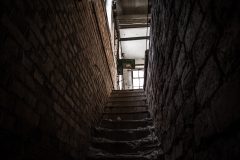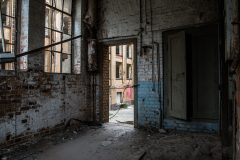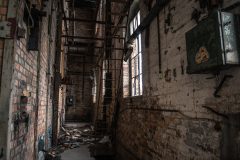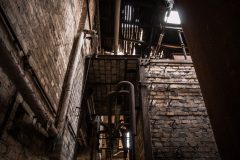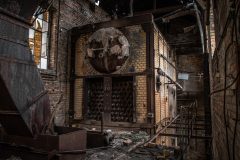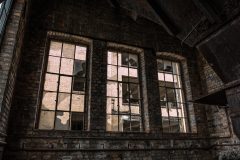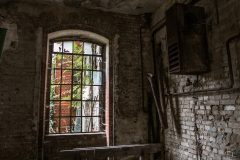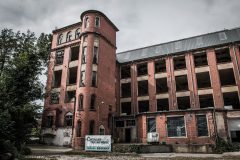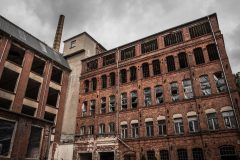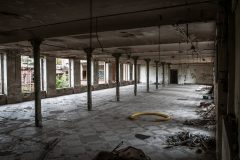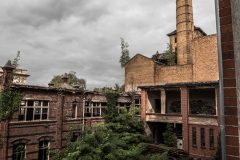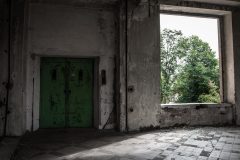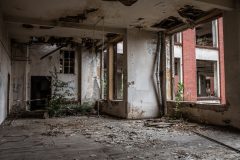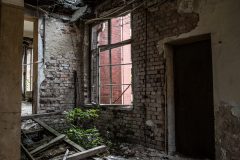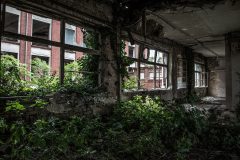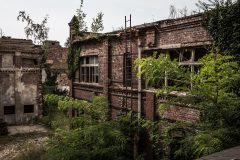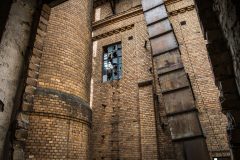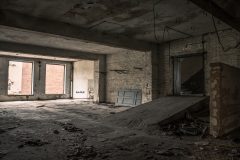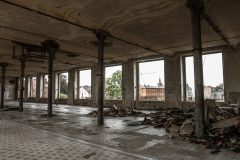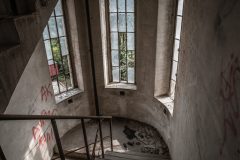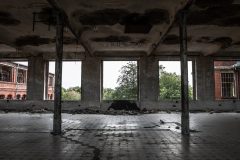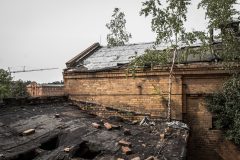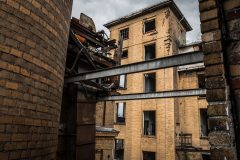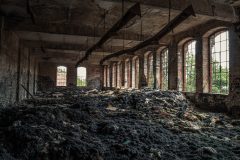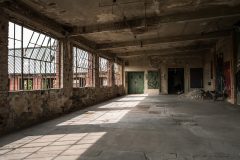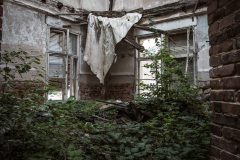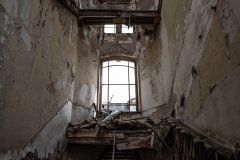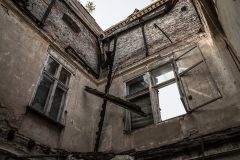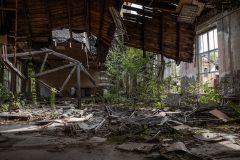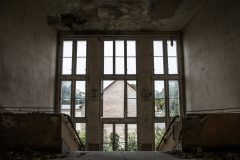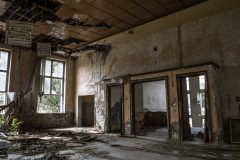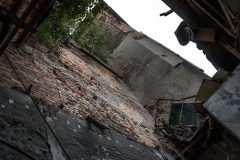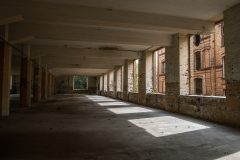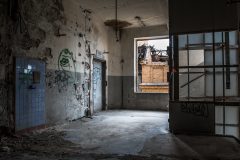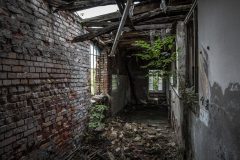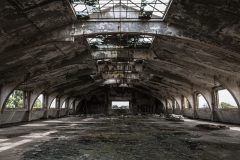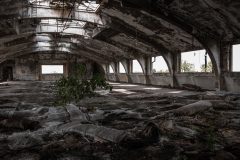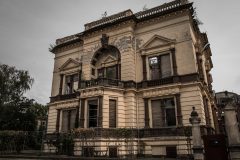The construction of the first steam engine in the city Forst in 1844 marked the beginning of the industrial revolution in the region. Not long after, Forst became one of the most important textile cities of its time. The city grew rapidly due to many opportunistic industrialists building their own factories. One of those was Adolf Noack. He started producing cloth in a small rented workshop right in the middle of Forst. Since he started to make more and more of a fortune, he decided to built his own new and big factory in 1884. The property provided enough space for factory buildings and a mansion while being located right besides a mill ditch which was ideal for the water hungry cloth production.
The factory flourished in the following years and Adolf Noacks wealth grew. The factory got its own train connection to the city train “Schwarze Jule”. In 1899 this train connection led to the construction of another cloth factory on the same property. The industrialist Hermann Bergami built his own factory right beside Noack in 1899. The factory with a red brick facade was conjoined to the boiler house of the Noack factory in order to share it. The Bergami building was expanded again with a storage hall in 1920. Together they later formed the “Tuchfabrik Bergami und Noack”.
In 1925 Noack decided to build a new 5-story factory building on the property. It was constructed with a yellow brick facade and an arch truss construction on its top floor, which made it possible to form a large hall without any support pillars in the middle. In this so-called “Fliegerhalle” the finished cloths were laid out for quality control before they left the factory.
During the Second World War, the buildings suffered some damage and had to be repaired and renovated after the war in 1945. The company was dissolved, which at the time, was owned by Hermann Bergami, Adolf Noack, C. O. Ditschke and Adolf Wenzel. Production recommenced in July 1945 and was run by a provincial administration. The produced goods and a lot of machinery were sent to the Soviets as reparations. With the dissolution of the provincial administration in 1947 the factory became part of the newly formed VEB Forster Tuchfabriken. The VEB contained many other factories throughout the city and belonged to the Textilkombinat Cottbus. The former Noack factory was known internally as “Werk 2” and the former Bergami factory as “Werk 1”.
After the end of the GDR, the factory was closed down by the Treuhand in 1991 like many other textile plants in Forst. The city has been on a downfall since then, with young people leaving and a lot of vacant factory buildings lining the streets. One year later the whole property was sold to an investor who didn’t care for the buildings. A lot of them deteriorated very fast with the lack of maintenance and reached a ruinous state. The former mansion faced the worst fate, with nearly all of its interior being destroyed. In 2015 the property was sold again to the current owner. Plans exist to renovate the buildings and make space for sports clubs, artists and small businesses in a project called “Gründer- und Traumfabrik”. Some parts of the first floor have already been cleaned up and are actively used. The Bergami building also got a new roof to prevent further water damage.
The location was visited with permission. It’s patrolled and shouldn’t be explored without the allowance of the owner.
